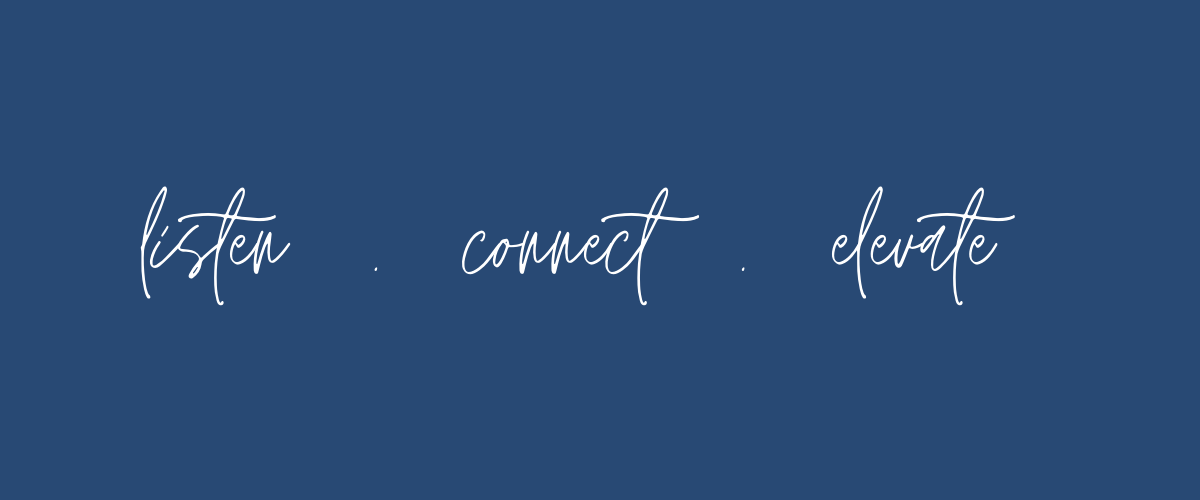Why Listening is at The Heart of Skillful Teaching
And what it takes to listen better…
Why Listening is at The Heart of Skillful Teaching
And what it takes to listen better…
Although I didn’t realize it explicitly in the beginning, listening has been a cornerstone of Skillful Teaching since its inception in 2013.
It began with listening. To myself.
In times of crisis we are often prompted, if not forced, to turn inward and listen better. In times of challenge, conflict, depression, hopelessness and strife this can be very difficult to do although all the more needed.
There are many ways to listen.
- By being still.
- By asking questions.
- By looking inward.
- By feeling inward.
- By observing.
- By feeling outward.
“Listening is an animating process by which we feel and understand the moment we are in: repeatedly connecting the inner world with the world around us, letting one inform the other. Listening is an ongoing way of relating to experience.” — Mark Nepo, Seven Thousand Ways to Listen
Some of my deepest listening came when I was in the midst of postpartum depression, struggling with a dissatisfying business partnership, overworked and exhausted, and very much hating teaching, the thing I thought I was meant to do.
For me it began with being still and practicing listening inward through an exploration of movement and inquiry fostered by Authentic Movement and mediation.
I had already created the Mentoring Program, which was based on a whole-person approach to teaching and learning. Listening was implicit in the roots of that program, as it still is.
We listened to the answers of well-crafted questions for ourselves:
Why do I teach? What is teaching? Why do I keep showing up? What kind of teacher do I want to be? What am I most committed to in my life, in my teaching?
And questions for our students:
How are we holding our students hostage to our expertise? How can/do we foster autonomy and self-efficacy rather than dependence? How can we create an environment of curiosity? How can we teach to the whole person in front of us, not just the muscles and bones?
This was the beginning.
What I know today is that listening is SO MUCH MORE than a good set of questions.
It’s about paying thoughtful and intentional attention to our internal and external perceptions, our habits of mind, our beliefs, our expectations. It’s about being able to listen with keen awareness to our nervous systems, tuning and nurturing our nervous systems, and developing trust in our experiences. All of this so we can show up fully in each teaching moment — even when we don’t want to, even when it’s hard, even when we don’t have the answers.
Cultivating listening to ourselves and fostering this kind of listening in our students is pivotal to learning.
We do that first and foremost, as movement teachers, through the body. More specifically through the nervous system.
Dr. Stephen Porges, creator of the Polyvagal Theory, said recently that the nervous system is the foundation for behavior. Change the nervous system — help it feel safe — and you will change behavior.
The nervous system is also the keystone of communication. More specifically it’s the root of our ability to socially engage. Communication IS social engagement. Teaching and learning IS communication.
It’s also connection. Both communication and connection are dependent on safety. Does my body (not my mind) believe I’m safe enough to be vulnerable and open, and to listen?
This work is the foundation of my teaching approach, Integrative Movement Facilitation. It’s also at the center of all of my teaching.
What I’ve come to understand in the past few years, and what I’m certain of now in this time of unprecedented uncertainty — at least in my lifetime — is that this is the work we’re being called to do as movement teachers; this is the way we can serve the world.
Through movement we can bring health to a person’s nervous system, allowing them to more accurately assess safety and therefore access a greater potential for listening, trusting, choosing, connecting and communicating.
This is the work of learning how to be the best human we can be so that we can engage with our lives more fully.
Movement does this.
You can do this.
What I’m dedicated to through Skillful Teaching is to consistently listen, connect, and elevate the conversation and every interaction for greater understanding and change. This is the foundation of my commitment to the anti-racism movement, to the work I have to do, and to supporting all of us who’s nervous systems, mental/emotional states, and lives have been and will continue to be impacted by Covid-19.
One body at a time.
One nervous system at a time.
This is Skillful Teaching.


 How are you showing up? Why are you showing up? Why do you teach? What IS teaching? Why do you care? This is Skillful Teaching: A Whole-person approach to being an expert teacher, not an expert technician. There's a difference. Want to know what it is?
How are you showing up? Why are you showing up? Why do you teach? What IS teaching? Why do you care? This is Skillful Teaching: A Whole-person approach to being an expert teacher, not an expert technician. There's a difference. Want to know what it is?